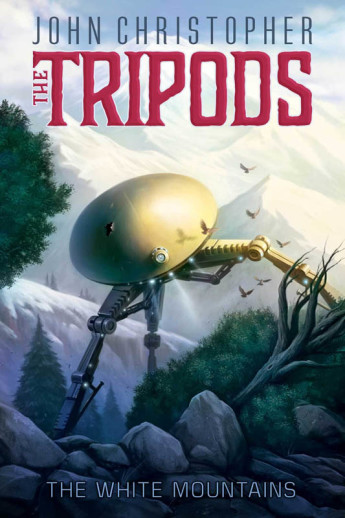We use cookies to make your experience better. To comply with the new e-Privacy directive, we need to ask for your consent to set the cookies. Learn more.
Tripods (White Mountains)
Giant, robot-like machines have taken over the world. There once was overpopulation and sickness, but since the Tripods, huge metal beings 60 – 70 feet tall, took control, things have been “better." Or at least that's what everyone has been told. Nobody knows what it was once like before the Tripods, nor does anyone fully know what a tripod truly is. Is the Tripod alive, or is the Tripod being controlled from outside or within by some other being? Will Parker has just witnessed his best and only friend go through the “capping" ceremony—the time where men become boys and girls become women. The Tripods swallow up the girl or boy, and bring them back with a metal cap built into their heads. The caps connect them to the Tripods and may never be removed. Whether the cap is accepted or rejected by the recipient's brain, the person is never the same again. They are now under control of the Tripod.
One day, Will meets a man who is unlike any man he's ever seen. He is not mentally controlled by the Tripods, but he also isn't wandering aimlessly like a vagrant either, a person who's capping ceremony failed. After admitting to being a free man and not actually being capped by the Tripods, the man tells Will of a land over the mountains where there are many free men like him. With his capping ceremony only a year away, Will decides to make the dangerous and likely fatal quest to find these free men so that he may also be free. He now understands the freedom, life, and happiness that the human race originally enjoyed. This exciting and intriguing novel shows Will's attempt of this long journey and the outcome of his fate. 227 pgs, pb. ~ Brianna
Monstrous machines rule the Earth, but a few humans are fighting for freedom in this repackaged start to a classic alien trilogy ideal for fans of Rick Yancey's The 5th Wave.
Will Parker never dreamed he would be the one to rebel against the Tripods. With the approach of his thirteenth birthday, he expected to attend his Capping ceremony as planned and to become connected to the Tripodshuge three-legged machinesthat now control all of Earth. But after an encounter with a strange homeless man called Beanpole, Will sets out for the White Mountains, where people are said to be free from the control of the Tripods.
But even with the help of Beanpole and his friends, the journey is long and hard. And with the Tripods hunting for anyone who tries to break free, Will must reach the White Mountains fast. But the longer he's away from his home, the more the Tripods look for himand no one can hide from the monstrous machines forever.
| Product Format: | Paperback |
|---|---|
| Brand: | Aladdin Paperbacks |
| Grades: | 4-8 |
| ISBN: | 9781481414777 |
| Length in Inches: | 7.625 |
| Width in Inches: | 5.125 |
| Height in Inches: | 0.75 |
| Weight in Pounds: | 0.4313 |

